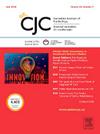遗传,健康和左心室重塑:当前的游戏状态。
IF 5.8
2区 医学
Q1 CARDIAC & CARDIOVASCULAR SYSTEMS
引用次数: 0
摘要
心肺适能(CRF)存在于一个频谱上,并受到包括遗传和环境差异在内的一系列因素的影响。这导致基线CRF的广泛个体间差异以及通过定期耐力运动训练提高CRF的能力。与单基因条件相反,CRF被描述为一种复杂的遗传性状,因为它被认为受多种常见遗传变异和外源因素的影响。重要的是,CRF是发病率和死亡率的独立预测因子,因此了解遗传变异对CRF的影响可以为人类运动表现和个性化风险评估和预防提供见解。尽管技术发展迅速,但该领域的进展受到样本量小和利用峰值耗氧量(vo2峰值)的金标准客观测量来评估CRF的遗传研究数量有限的限制。近年来,人们对心脏结构和功能的许多参数的遗传性以及这与正常心脏生理和疾病病理之间的关系越来越感兴趣。定期耐力训练可导致运动诱导的心脏重塑,表现为心室平衡扩张,并与较好的CRF相关。这导致CRF、心脏大小和运动之间的复杂关系,以及共享的遗传途径是否会影响这一点仍然未知。本综述将重点介绍CRF基因组预测因子的最新相关研究,并特别强调其与心脏重塑和人类对耐力运动的适应之间的关系。本文章由计算机程序翻译,如有差异,请以英文原文为准。

Genetics, Fitness, and Left Ventricular Remodelling: The Current State of Play
Cardiorespiratory fitness (CRF) exists on a spectrum and is driven by a constellation of factors, including genetic and environmental differences. This results in wide interindividual variation in baseline CRF and the ability to improve CRF with regular endurance exercise training. As opposed to monogenic conditions, CRF is described as a complex genetic trait as it is believed to be influenced by multiple common genetic variants in addition to exogenous factors. Importantly, CRF is an independent predictor of morbidity and mortality, and so understanding the impact of genetic variation on CRF may provide insights into both human athletic performance and personalized risk assessment and prevention. Despite rapidly advancing technology, progress in this field has been restricted by small sample sizes and the limited number of genetic studies using the “gold standard” objective measure of peak oxygen consumption (VO2peak) for CRF assessment. In recent years, there has been increasing interest in the heritability of numerous parameters of cardiac structure and function and how this may relate to both normal cardiac physiology and disease pathology. Regular endurance training can result in exercise-induced cardiac remodelling, which manifests as balanced dilation of cardiac chambers and is associated with superior CRF. This results in a complex relationship between CRF, cardiac size, and exercise, and whether shared genetic pathways may influence this remains unknown. In this review we highlight recent and relevant studies into the genomic predictors of CRF with a unique emphasis on how this may relate to cardiac remodelling and human adaptation to endurance exercise.
求助全文
通过发布文献求助,成功后即可免费获取论文全文。
去求助
来源期刊

Canadian Journal of Cardiology
医学-心血管系统
CiteScore
9.20
自引率
8.10%
发文量
546
审稿时长
32 days
期刊介绍:
The Canadian Journal of Cardiology (CJC) is the official journal of the Canadian Cardiovascular Society (CCS). The CJC is a vehicle for the international dissemination of new knowledge in cardiology and cardiovascular science, particularly serving as the major venue for Canadian cardiovascular medicine.
 求助内容:
求助内容: 应助结果提醒方式:
应助结果提醒方式:


